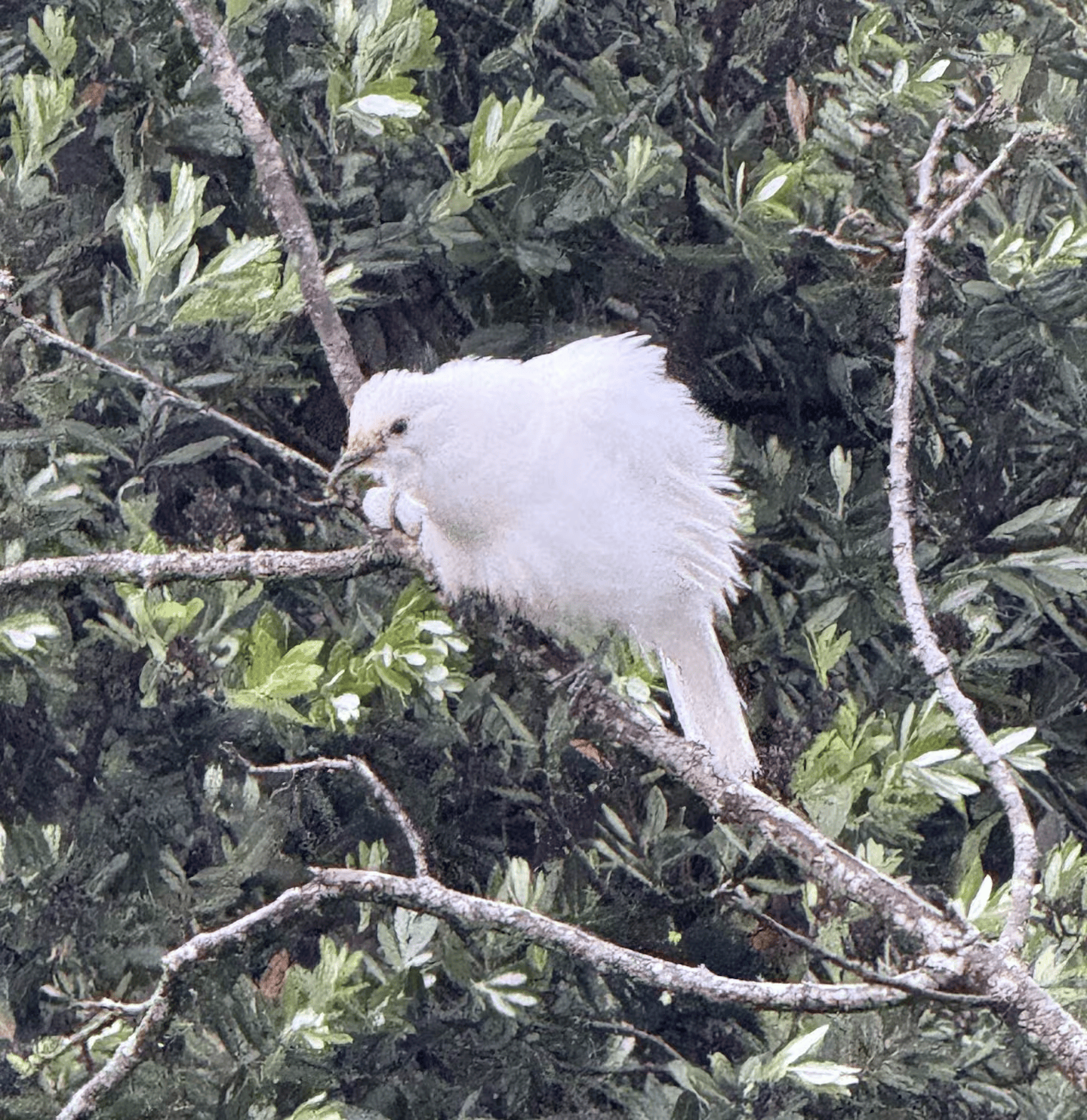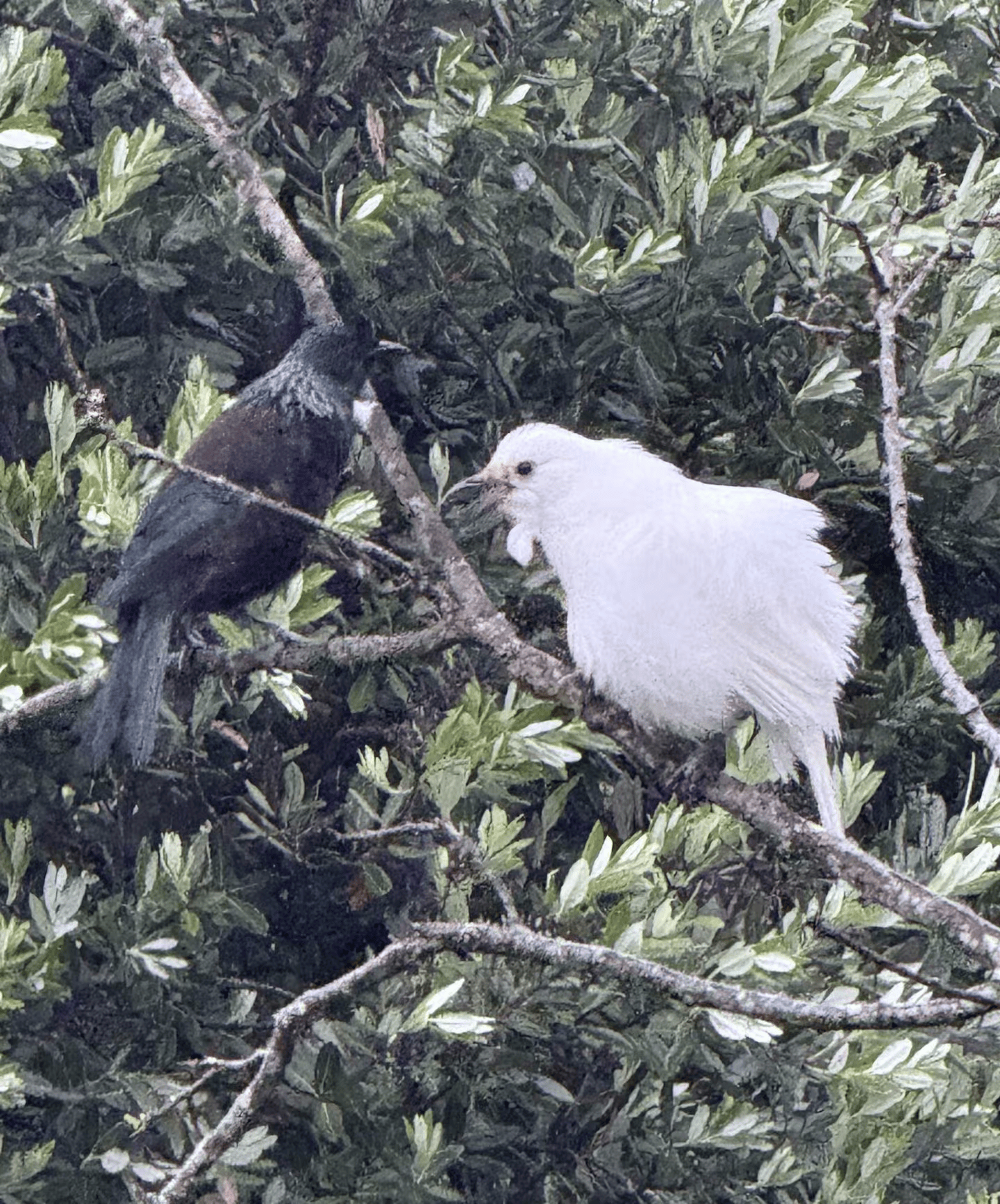Rare White Tūī Stuns Local Resident With Daily Visits
A Central Otago resident has been treated to a rare sight — a striking white tūī that has begun visiting his property almost every day.
Pye said he first noticed the bird flying around his avocado tree several weeks ago, and at first glance wasn’t sure what he was looking at.
“We definitely had to have a close-up double-take, but as soon as we saw the tufts of feathers we knew it was a tūī. The beak was a giveaway too.”
Getting clear photos proved difficult. “Anytime I got close, it would gap it,” he said. “I got up for the rugby the other morning and looked out the window after the game, and it was in the kōwhai tree. I quickly shot out and got some photos, and throughout the day got a couple more.”
The white tūī has become a neighbourhood favourite and even appears to have paired up with a standard blue, green and black tūī.
“They fly around together,” Pye said. “It’s really cool seeing it. It’s so white and so different than the other birds flying around.”
Other locals have reported sightings of a white tūī in previous years, suggesting it may have been in the area for some time. Pye said the bird did not look young and felt lucky to see such a rarity. “We get kererū and weka and all of them around here. There’s a reason our kōwhai tree has no leaves on it.”
Te Papa vertebrates curator Dr Colin Miskelly said white tūī usually appear due to a genetic mutation.
This bird is leucistic, meaning its feathers are unusually pale without the defining characteristics of albinism. “Most white tūī are not albinos,” he said. “They do not have pink eyes and typically have slightly grey or brown feathers rather than pure white.”
Other locals have reported sightings of a white tūī in previous years, suggesting it may have been in the area for some time. Pye said the bird did not look young and felt lucky to see such a rarity. “We get kererū and weka and all of them around here. There’s a reason our kōwhai tree has no leaves on it.”
Miskelly said leucism can be hereditary or influenced by developmental or environmental factors, and that he generally hears of two or three white tūī sightings each year.



